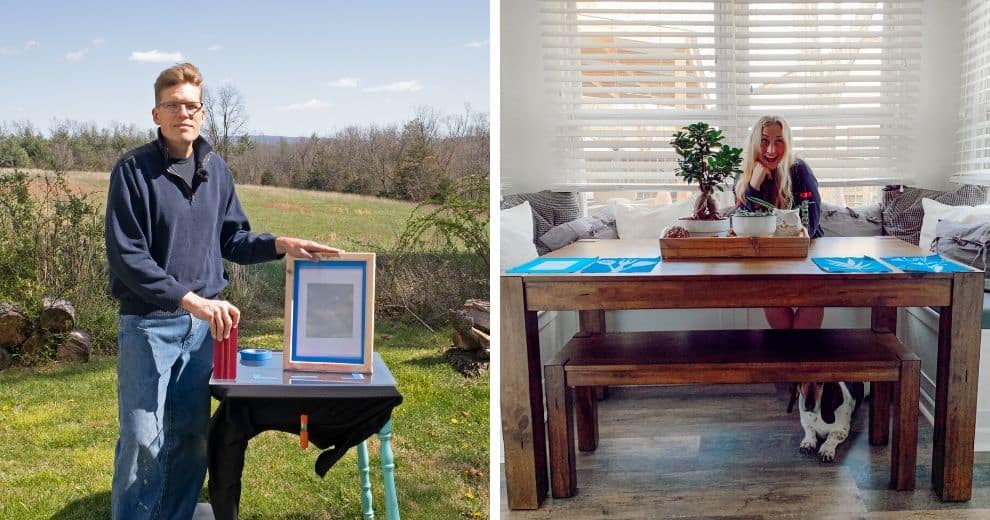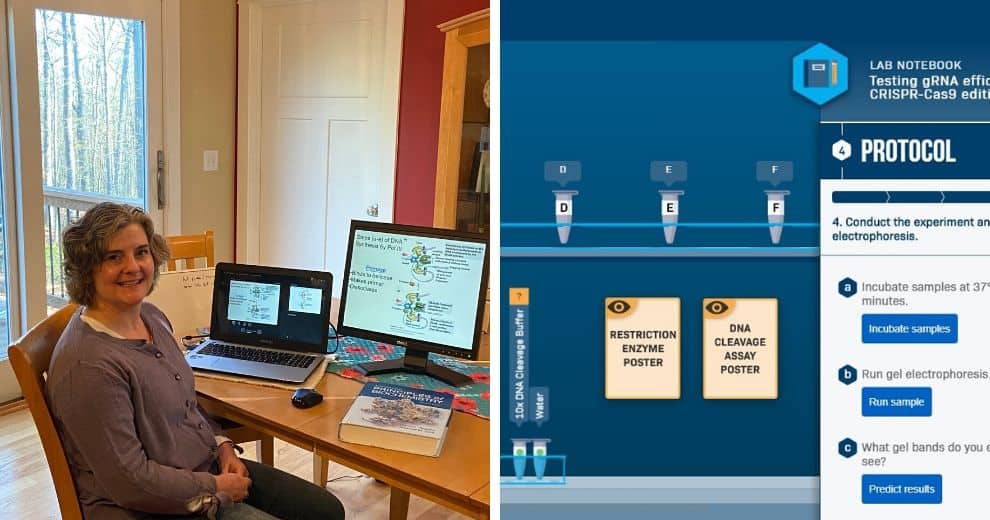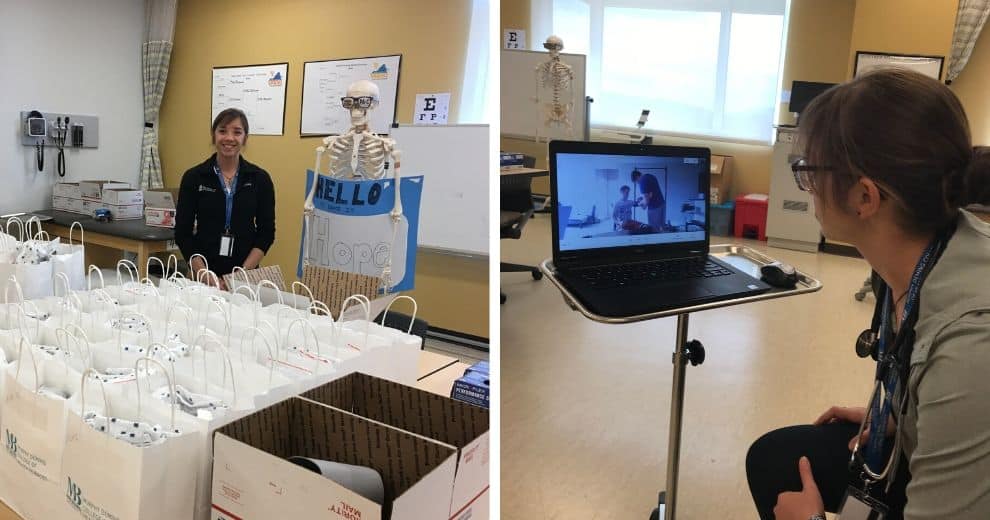As members of the Mary Baldwin family stay at home across the country and around the world, students and faculty have used creativity and resilience to adapt how they teach and learn.
Pivoting quickly and unexpectedly to an online format is a challenge in all courses, but especially in classes that require significant in-person time. How, then, are teachers in subjects like studio art and lab science making it work?

Art from afar
Associate Professor of Art Jim Sconyers was teaching two studio art classes when the global pandemic hit: ART 122 Silkscreen Printing and ART 124 Photography/Printmaking. Here’s how he enabled his students to keep making art.
“The sudden transition to ‘remote studio instruction’ caused a bit of whiplash — it knocked me off my feet,” said Sconyers. “I reached out to colleagues at Duke, UNC Chapel Hill, UNC Asheville, and Washington & Lee seeking consultation and solutions. I was inspired.”
Sconyers assembled and shipped packages of supplies to his 17 printmaking and photography students across the United States and as far away as Japan and South Korea. MBU printmakers are now silkscreening at home, and photo students are exposing cyanotypes, following new instructional videos that Sconyers has posted on YouTube.
This method is time-intensive, but worth it. Planning content and recording and editing the videos takes more time than the actual workshops, Sconyers said.
His students are running with the supplies and the inspiration, creating in their yards and on their kitchen tables.
First-year student Kaiden Scanlon is in Sconyers’ photography class, and at first she too struggled with the transition to online learning.
“I have been missing all the hands on-activities and carefully planned lessons my professors had planned on assigning,” she said, “but Prof. Sconyers has found a way to extend the fun hands-on work we did in every class period to my home environment.”
Students have been sharing their finished creations not only with Sconyers, but also with each other.
“Explaining our process and thinking together online helps the whole class stay not only hands-on but also involved, connected with, and inspired by each other,” Scanlon said. “I think Prof. Sconyers has beautifully transitioned us into the at-home environment and made it very easy to be successful going forward.”
“Explaining our process and thinking together online helps the whole class stay not only hands-on but also involved, connected with, and inspired by each other.”
Kaiden Scanlon, first-year photography student
Working in the lab, at home

Associate Professor of Chemistry Maria Craig (pictured left, working from her kitchen table) is using virtual simulations like “Design and Testing of Guide RNAs for CRISPR-CAS9 Gene Editing” (partial screenshot, right) to help her students run experiments away from the lab.
Maria Craig, associate professor of chemistry, had to find a way to teach her students in Biochemistry II and Organic Chemistry II how to perform experiments with no laboratory or special equipment. Science faculty at MBU have curated and created virtual lab exercises to help their students stay sharp.
“Although there is no substitute for actual hands-on lab experience, there are some creative activities out there that teach concepts really well,” Craig said.
For her biochemistry lab, Craig is using a digital simulation from California State University based on the novel CRISPR method for altering genes and genomes. Students design an experiment and put materials together in the correct amounts, making the gene editing technique work in a virtual lab space.
Craig has also created five-minute problem-solving videos for organic chemistry students that help them understand how to find the product of chemical reactions. Usually, they would use class time to study and work through these types of problems together.

Professor Jennifer Hunt helped assemble lab kits for physician assistant students in the classes of 2021 and 2022 (left). She teaches most of the hands-on skills for PA students, earlier this semester doing so virtually (right).
Physician assistant (PA) graduate students at MBU’s Murphy Deming College of Health Sciences also faced the problem of how to continue their lab studies. Part of the solution came in the mail when kits from Murphy Deming arrived with the supplies they needed to stay on track with their training and coursework at home.
“Our goal is to enable the PA Class of 2021 to complete their comprehensive practical exams so that they can move on to the clinical phase of the program,” said Assistant Professor Jennifer Hunt, who helped coordinate the effort, “and to equip the Class of 2022 to begin their physical exam lab skills virtually so they won’t miss a beat when they return to the classroom and lab.”
PA faculty also brought students together online to prepare for their upcoming comprehensive exams. They are taking inspiration from Murphy Deming’s PA challenge bowl team, which can’t go to the national competition in Nashville this year due to the pandemic, and inviting students to join quiz-bowl style reviews through Blackboard Collaborate.
“The silver lining to all of this is I am getting the opportunity to be creative and enhance my use of technology, which will only improve the curriculum and resources available to students when we return to ‘normalcy,’” Hunt said.
All MBU faculty faced the Herculean task of transforming their curriculum and plans to an online format that would keep serving their students. And students are making the best out of a spring semester that looks incredibly different than what they expected. The strength of the Mary Baldwin family helps maintain close ties and inspires the pursuit of academic excellence, even as students, faculty, staff, and alumni remove themselves from campus and shelter at home to help slow the spread of COVID-19.
“The silver lining to all of this is I am getting the opportunity to be creative and enhance my use of technology, which will only improve the curriculum and resources available to students when we return to ‘normalcy.’”
Jennifer Hunt, assistant professor, physician assistant program